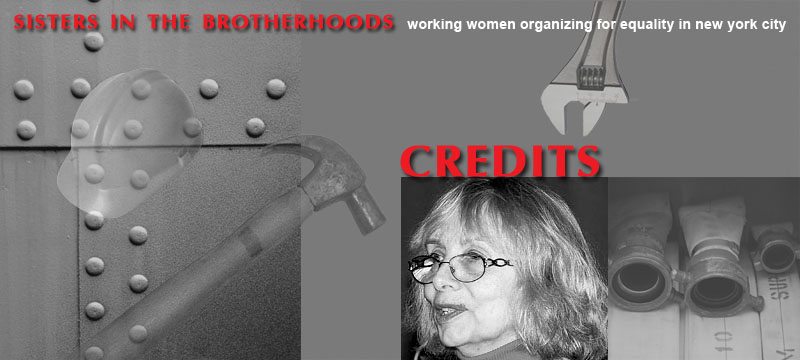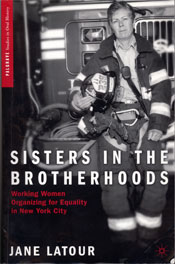 |
||||||
|
||||||
|
The subject of women working in nontraditional jobs first attracted Jane Latour's attention in graduate school, when she read about the "Rosie the Riveters." For a term project she interviewed women working in a nearby Ford auto assembly plant. Since then, the combination of writing about this topic, working as an advocate and union organizer, and her years as a labor educator have given her a depth of understanding and a critical perspective.
Latour's working life began on the assembly line. For more than seven years she worked in electronics assembly plants, pharmaceutical companies, and many other factories. While teaching in the mid-1980s, she earned extra income as a Teamster, working the night shift as a package sorter in a United Parcel Service warehouse. She was one of very few women working in the warehouse. An even smaller number of women worked as truck drivers for the company. She and other female workers organized and met regularly after the monthly union meetings. They successfully convinced Local 177's leadership that women had separate issues that weren't being addressed by the union or the company. The failure to do so, they argued, led to a significantly higher dropout rate for the female truck drivers. As a union organizer for District 65 (1977-1979), Latour gained an insider's perspective on trade unions and their function as political organizations. Issues of gender kept appearing in the foreground while she organized low-paid electronics and other assembly-line workers and functioned as a union staff person. She participated in the Coalition of Labor Union Women and other gender-related activities. One moment that stands out was an aborted attempt by female union representatives and support staff to organize a women's group at the New Jersey office of District 65. After one promising meeting the union leadership put the kibosh their efforts. After three years as an organizer, she worked in labor education. As an adjunct instructor for electrical apprentices in New York City's Local 3, IBEW, she was invited to present a theater piece she had written about the history of women in the labor movement. The audience, a class of female apprentices, reacted strongly to the presentation. Their response motivated her to explore further the different experiences of males and females in the workplace by developing curriculum materials and classroom experimentation. In 1989 Latour became director of the Women's Project, Association for Union Democracy, a Brooklyn-based national civil rights organization for trade unionists. At that time the New York City Commission on Human Rights was preparing to hold public hearings on race and gender discrimination in the construction industry. Latour coordinated the participation of tradeswomen and advocacy organizations in those hearings. As director of the Women's Project (1989-1990 and 2000-2002), she developed many original efforts to address issues related to women in skilled, blue-collar jobs. One was a collaborative book project involving the AUD Women's Project, NOW Legal Defense and Education Fund, and Nontraditional Employment for Women (NEW). The collaborators produced the highly successful Manual for Survival for Women in Nontraditional Employment. In 1989 Latour began interviewing women in skilled nontraditional jobs who were finding ways to organize and actively take on the obstacles they faced on the job and in their unions. Their experiences inspired her to document and share their stories with others. These interviews were the genesis of her oral history project. "Operation Punch List" was another effort that focused on an agenda to achieve equal employment opportunity. "Live! From New York: Women Construction Workers in Their Own Words," appeared in the May 2001 issue of Labor History. The article was based on a talk that Latour gave at the North American Labor History Conference in October 2000. The positive response to the talk and the article encouraged her to undertake the next logical step, a book project. In her current position as an associate editor for the Public Employee Press (District Council 37, AFSCME), Latour writes about women and nontraditional work, gender and discrimination, for the union newspaper. However, many important dimensions to this problem will never be published in a union newspaper. These are the stories and analyses that are set out in Latour's book, Sisters in the Brotherhoods. |
|||||
| ||||||
| Copyright 2012 Jane Latour/Talking History |
||||||
